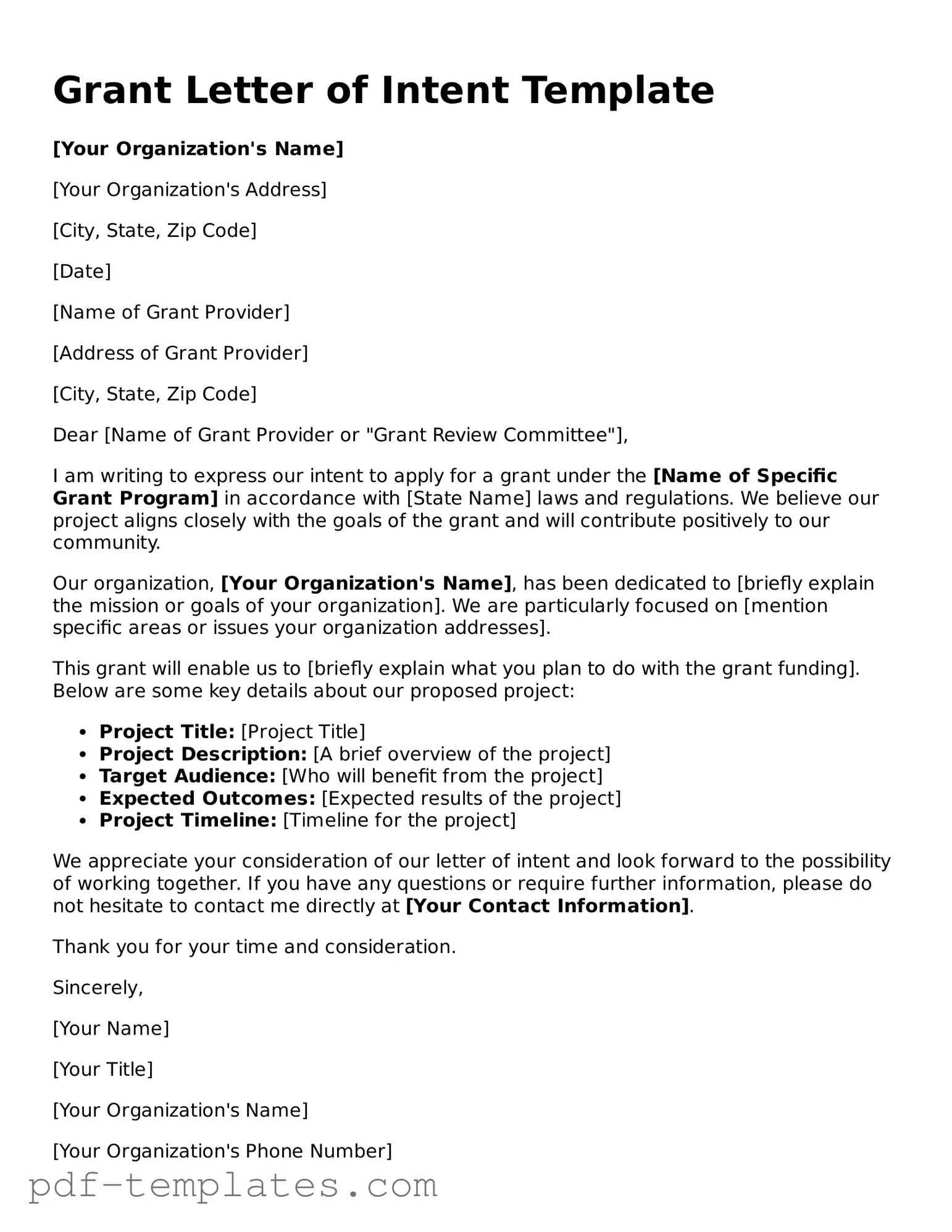The Grant Proposal is a formal document submitted to request funding for a specific project or initiative. Like the Grant Letter of Intent, it outlines the purpose of the project, the goals to be achieved, and the budget required. Both documents serve as initial steps in the funding process, allowing organizations to present their ideas to potential funders. However, while the Letter of Intent is typically shorter and serves as a preliminary inquiry, the Grant Proposal is more detailed and comprehensive, providing a complete plan for execution.
To ensure you meet the requirements for your homeschooling journey, it is crucial to properly understand the necessary documentation, such as the Alabama Homeschool Letter of Intent. This letter not only acts as a formal notification to your local school system but is also essential for complying with state regulations. For those looking for a convenient template, click here to download the editable version that can simplify the process.
The Concept Paper is another document similar to the Grant Letter of Intent. This document provides a brief overview of a proposed project, including its objectives, significance, and potential impact. Like the Letter of Intent, the Concept Paper is often used to gauge interest from funders before a full proposal is developed. Both documents aim to capture the attention of potential sponsors and outline the project's relevance, but the Concept Paper usually goes into slightly more detail about the project's framework and expected outcomes.
The Letter of Inquiry (LOI) is closely related to the Grant Letter of Intent. An LOI is typically sent to a foundation or funding agency to introduce a project and determine whether it aligns with the funder's priorities. Both documents serve as a means of initiating communication and assessing interest. However, the Letter of Inquiry often requires more specific information about the organization and the project than a Letter of Intent, which may be more general in nature.
The Funding Application is another document that shares similarities with the Grant Letter of Intent. This application is a formal request for funding that includes detailed information about the project, budget, and timeline. While the Letter of Intent serves to express interest and intent to apply, the Funding Application is a more comprehensive document that includes all necessary details for the funder to make a decision. Both documents are crucial in the funding process, but they serve different purposes at different stages.
The Executive Summary is also akin to the Grant Letter of Intent. This document provides a concise overview of a project, summarizing its key components, objectives, and expected outcomes. Like the Letter of Intent, the Executive Summary is often used to quickly convey essential information to potential funders. However, the Executive Summary is typically part of a larger proposal, while the Letter of Intent stands alone as an initial expression of interest.
Finally, the Project Description is a document that outlines the specifics of a proposed project, including its goals, methods, and expected results. Similar to the Grant Letter of Intent, it aims to inform potential funders about the project’s significance and feasibility. However, the Project Description is usually more detailed and structured, providing a thorough breakdown of the project plan. Both documents are important in securing funding, but they differ in their depth and level of detail.
